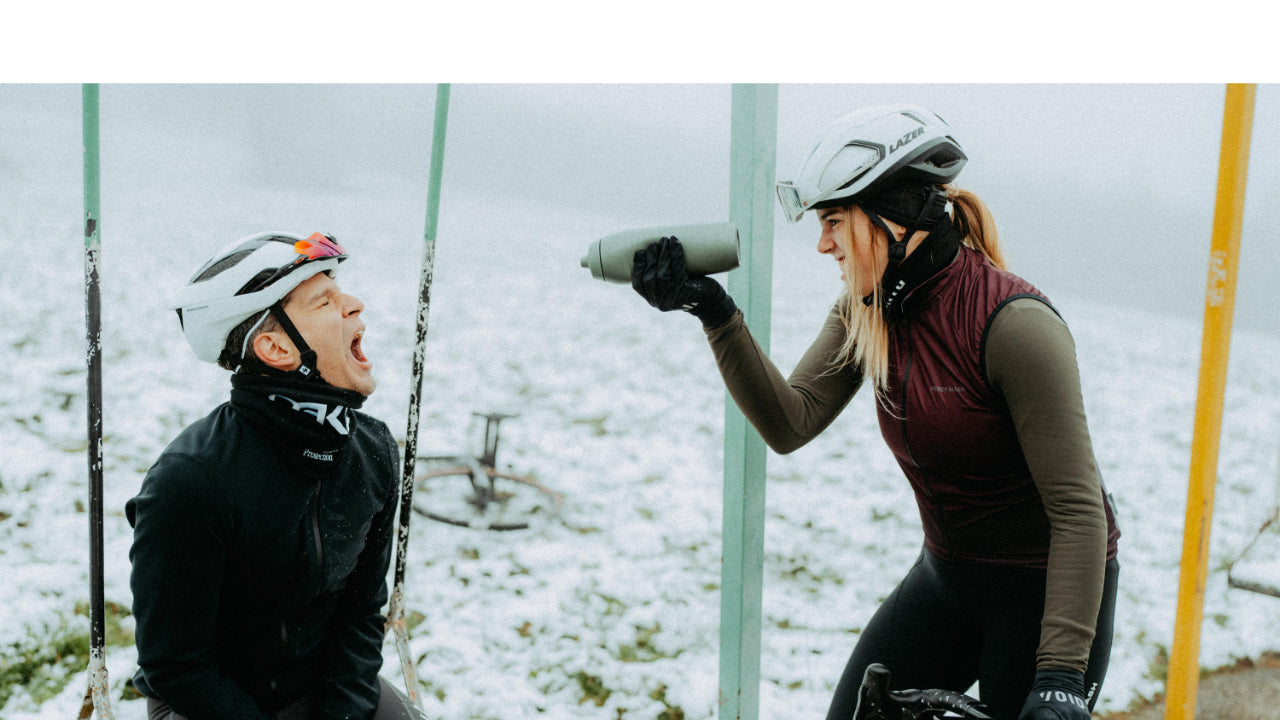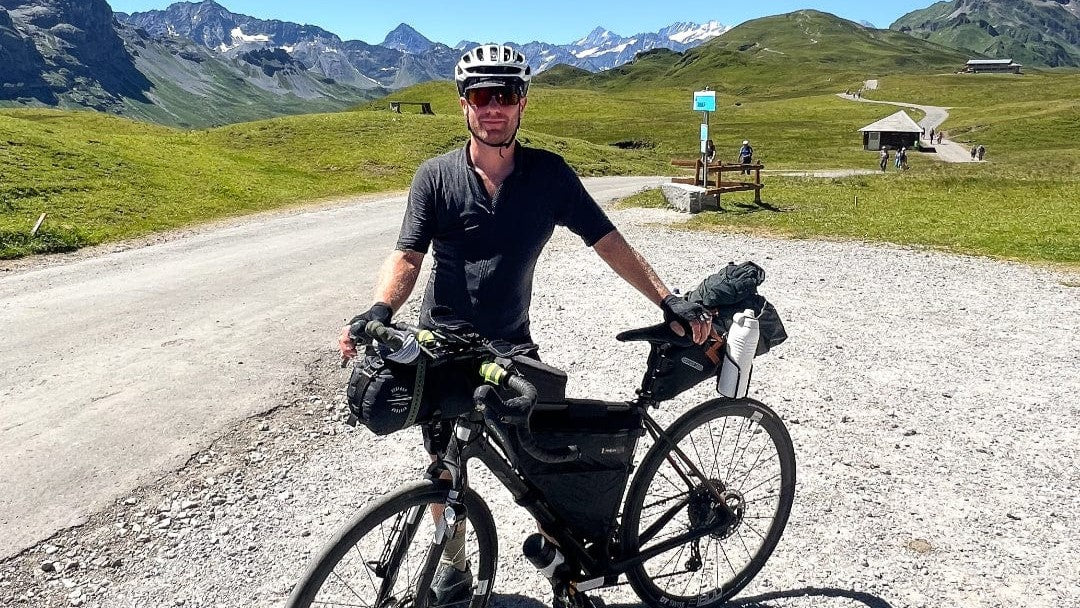WE KEEP YOU HYDRATED. EVEN (MORE) IN WINTER?
Would you like to know why it is especially important in winter to cover your personal water needs? Then you've come to the right place. Increase your daily water intake with these 12 tips.

In winter it's cold, you sweat less, so you don't have to drink as much, right?
Far from it! Our body's mechanism, which regulates our sense of thirst, does not function as satisfactorily in cold temperatures as it does in warm temperatures. After a sweaty workout in the summer, thirst is not long in coming.
But after a round of sport in crisp outside temperatures and returning to heated rooms, most people are not really aware of their body's fluid requirements.
Even at around 20 degrees Celsius in a room and without additional physical exertion, our body loses almost 2.5 liters of fluid per day through breathing, mucous membranes, skin and urine.
This value increases accordingly with physical exertion.
Also a crucial factor in winter: dry air in heated rooms.
This causes our mucous membranes in the mouth, nose, and throat to dry out. As a result, pathogens have a particularly easy time, as the mucous membranes can no longer effectively fulfill their barrier and protective function.

Similar to high altitudes, the need for fluids also increases sharply at temperatures below zero. Cold and sometimes dry air cause sweat to evaporate quickly, so it usually goes unnoticed. In addition, at winter temperatures, the body is constantly busy keeping the core body temperature at a stable level. As a result, it is constantly working at full speed, burning calories, sweating, and therefore needs fluid to compensate for the loss.
Although the guideline value of the recommended 2.5 liters per day - without additional physical activity - varies slightly depending on body size and weight, it still helps with self-monitoring. We consume about 1 liter of fluid through our daily food intake. That leaves 1.5 liters that we should drink at least - even in winter.
12 HELPFUL TIPS TO STAY HYDRATED THROUGH THE WINTER:
Tip 1: DRINK (RATHER) WARM WATER
It is particularly recommended to drink warm water, which is about the temperature of the body at 37 degrees. This way, the body does not have to use energy to warm up the water. Warm water also tastes like pure water from the KEEGO. In contrast to warm water from plastic bottles.
Tip 2: START YOUR DAY WITH WATER
We all lose a lot of water through our sweat while we sleep. The morning is particularly suitable for establishing a drinking habit. Simply start the day with a large glass or a KEEGO full of water after getting up. Here too, warm water is better than cold.
Tip 3: DRINK STILL WATER
Water without carbonation is more tolerable for your body, can be absorbed more easily and is therefore the better choice.
Tip 4: WORK MORE FLUIDLY
Place your water bottle on your desk or at your workplace to be reminded to drink regularly. If you are traveling or have appointments, carry your bottle of water with you to quench your thirst in good time and continuously.

Tip 5: DON'T BE SHY
Use your water bottle even during your meetings and video calls. Adequate hydration gives you the necessary attention and concentration. And lets you reap envious glances on the side. We speak from experience.
Tip 6: CHOOSE WATER FIRST
Choose water as your first choice when you fill your bottle. It is the best way to hydrate your body. You also boost your metabolism with water intake and flush out toxins. If you want a change, prefer healthy alternatives and avoid sugary lemonades, juices and dehydrating alcohol.

Tip 7: DRINK BEFORE YOU EAT
It is not recommended to drink large amounts during meals. Drinking 30 minutes beforehand makes twice as much sense. Your stomach, which is not completely empty, reduces the risk of "overeating." This way, you can use the occasion of eating to establish a drinking routine.
Tip 8: REDUCE STRESS
Stress causes us to lose sight of our fluid needs and forget to drink. Prevent stress with sufficient exercise: Regular exercise activates the metabolism in your body and trains the release of the stress hormones adrenaline, noradrenaline, insulin, or cortisol. This will make you more resistant to stress in the long run and less forgetful when it comes to drinking.

Tip 9: AVOID DEHYDRATING FOODS
Avoid foods that dehydrate you. This is especially important if you are not drinking enough fluids anyway. Processed meats such as sausage and salami, salty snacks such as French fries or chips, foods with industrial sugar, and alcohol are particularly dehydrating.
Tip 10: CHOOSE FUNCTIONAL CLOTHING FOR SPORTS
To prevent excessive sweating or freezing, you are perfectly equipped with the right combination of functional clothing: The textiles transport sweat away from the body, keep the heat at a comfortable level and offer you enough freedom of movement for your activity.

Tip 11: KNOW THE VOLUME OF YOUR BOTTLE
Use containers that need to be drunk a certain number of times. Drinking 1.5 liters means drinking the KEEGO 750 twice or the KEEGO 500 three times.
Sounds pretty simple, doesn't it?
Tip 12: DEVELOP YOUR ROUTINE
Use our tips to establish a healthy routine for your water intake in winter. Try them out for at least two weeks to get into your drinking flow.
If you are still looking for a water bottle for sports and everyday life, you will definitely find it HERE.
WATER MARCH & KEEP GOING!
Your Team KEEGO



1 comment
HERBERT
Water is life
Water is life